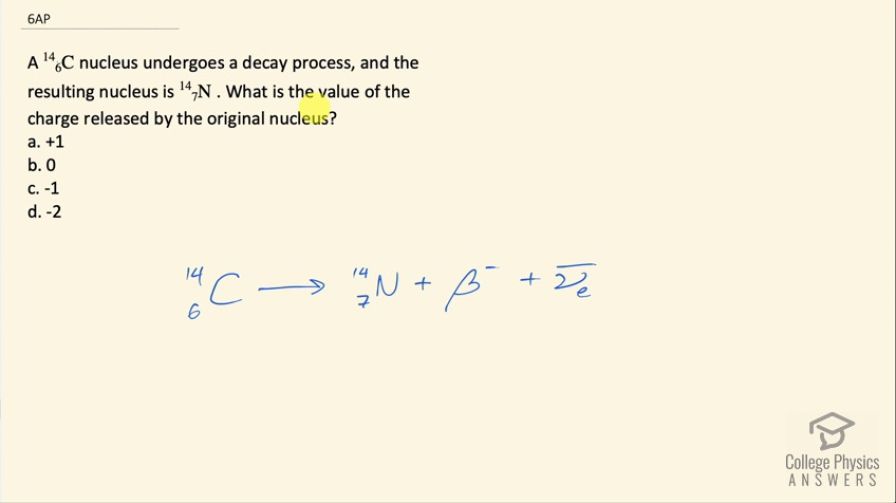Question
A nucleus undergoes a decay process, and the resulting nucleus is . What is the value of the charge released by the original nucleus?
- +1
- 0
- -1
- -2
Final Answer
(c)
Solution video
OpenStax College Physics for AP® Courses, Chapter 31, Problem 6 (Test Prep for AP® Courses)

vote with a rating of
votes with an average rating of
.
Video Transcript
This is College Physics Answers with Shaun Dychko. A carbon-14 nucleus undergoes a decay process and results in nitrogen-14 so what is the value of the charge released by this original nucleus? So the decay of carbon-14 is a β-decay because if the number of positive charges is going to increase by 1 from 6 to 7, there must be a compensating decrease in charge as well in order to have charge conserved. So we start with a charge of positive 6 on the left with 6 protons and on the right, we need to remain positive 6 so we are given 7 in this nitrogen we need to have a negative charge in this β particle to have a total of 6. There's also an electron anti-neutrino created in order to conserve electron family number but that's not really part of this question. So the answer to this question is negative 1, the answer is (c).